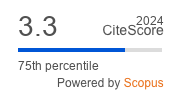Article | Open Access
Intergenerational Friendship as a Conduit for Social Inclusion? Insights from the “Book‐Ends”
| Views: | 6898 | | | Downloads: | 3226 |
Abstract: Friendship is said to promote psychological and physical well‐being and increase social inclusion. Yet, intergenerational friendship has garnered little research attention due to the assumed dominance of age homophily in friendship. In this article we explore intergenerational friendship from the perspective of “younger” and “older” friends at the “generational book‐ends” of the life course. We focus on the role that intergenerational friendship plays in processes of social inclusion in the everyday lives of the participants, bringing together a study conducted in Finland and one in Ireland. Both studies employ qualitative methodology, drawing from interviews with 31 young people who were refugees (aged 13–18) in Finland and 23 older people (aged 65+) in Ireland. Our findings reveal that the younger and the older participants concur on the qualities and benefits of intergenerational friendship. Additionally, while age is not a uniform definer of friendships, differences in chronological age are not meaningless but support caring, enjoyment, and inclusion in alternative ways compared to peer‐aged friendships. Access to diverse company, distinct support, broader networks, and alternative identities lead to increased experiences of social inclusion at a personal and societal level. We conclude by calling on policy makers and communities to create spaces and opportunities for inclusion through friendship for all generations.
Keywords: book‐end generations; friendship; intergenerational friendship; older people; social inclusion; young people
Published:
© Riikka Korkiamäki, Catherine Elliott O'Dare. This is an open access article distributed under the terms of the Creative Commons Attribution 4.0 license (http://creativecommons.org/licenses/by/4.0), which permits any use, distribution, and reproduction of the work without further permission provided the original author(s) and source are credited.


